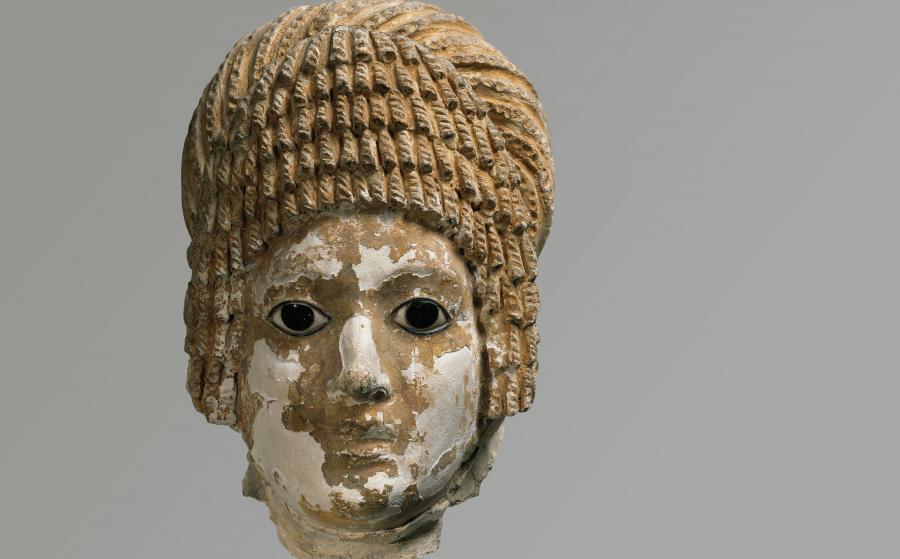Funeral mask
Information sur l’artiste
Heliopolis

Masque funéraire, Ier-IIe siècle ap. J.-C.
Image © Lyon MBA – Photo Alain Basset
This magnificent gilt plaster mask was originally placed on the mummy of an Egyptian woman buried at the time of the Roman Emperor Trajan or Hadrian. At that time, Pharaonic traditions still had a strong influence on burial rites.
It can be identified as an ancient funeral mask due to the layer of gold stucco used for the skin and the eyes, inlaid with glass paste, which give the face an intense, lifelike appearance. The outer layer of linen of the mummy would also have been covered by other pieces of cartonnage – a chest plate, leg covering, and a box for the feet.
The mask is modelled on the head of a Roman noblewoman who sports an impressive coiffure of ornamental ringlets held in a turban, which was fashionable at the time of the Flavian Emperors (69-96 A.D.) and under the rule of Trajan (98-117 A.D.). This type of funeral mask, several examples of which are held at the museum, was reserved for a rich elite.
Heliopolis
Roman era, 100-120 A.D.
Gilt plaster with inlay
H. 25; L. 16; D. 16.5 cm
Acquired in 1835
Inv. H 1281





